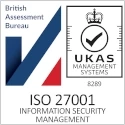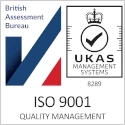15
+
YEARS OF
EXPERIENCE
1000
+
SUCCESSFUL
Projects
80
+
Satisfied
Clients

Selecting the right managed service provider (MSP) is critical for businesses that want to optimize IT operations, improve security, and support growth. However, with numerous MSPs offering a variety of services, it can be challenging to determine which provider is best suited for your organization. A Managed Service Provider Checklist is a strategic tool that helps businesses evaluate potential or existing MSPs to ensure they meet performance, security, and strategic objectives.
Evaluating Service Scope and Performance
The first component of a Managed Service Provider Checklist involves reviewing the range of services offered and the quality of service delivery. Businesses should ensure that the MSP provides comprehensive IT support, including network management, cloud solutions, cybersecurity, endpoint management, data backup, and helpdesk services.
Assessing performance includes evaluating response times, issue resolution, and the effectiveness of proactive monitoring. A reliable MSP should consistently meet service level agreements (SLAs) and provide solutions that prevent recurring problems, ensuring system reliability and operational efficiency.





Assessing Technical Expertise
Technical competence is another essential element in a Managed Service Provider Checklist. Organizations need an MSP with certified, experienced professionals who are capable of managing current technologies and anticipating future trends. The provider should demonstrate expertise in areas such as cloud computing, network optimization, cybersecurity, and enterprise applications.
An MSP that continually innovates and recommends strategic improvements adds value beyond routine maintenance. Their technical knowledge should help your organization optimize IT infrastructure, adopt emerging technologies, and enhance overall productivity.
Reviewing Security and Compliance
A robust MSP ensures that security and compliance are integral to its services. When using a Managed Service Provider Checklist, businesses should evaluate how the MSP manages cybersecurity threats, monitors networks, implements firewalls, encrypts data, and provides secure authentication.
The checklist should also verify that the MSP maintains regulatory compliance with standards such as GDPR, HIPAA, ISO 27001, and PCI DSS. A provider that prioritizes security and compliance mitigates risks, safeguards sensitive information, and protects the organization’s reputation.
MSP Overview
Our modern approach to technology and strict security measures, Proxar is a leading Managed Service Provider in the UK with clients mostly around LondonHow to assess your existing MSP?
Evaluate your current Managed Service Provider’s performance with insights on service quality, efficiency, and business alignment.Managed Service Provider Calculator
Estimate your IT service costs and savings with our easy-to-use Managed Service Provider value calculator tool.
Examining Communication and Reporting
Effective communication is a critical part of a successful MSP relationship. The checklist should include evaluating how the provider communicates updates, incidents, and recommendations. Regular reporting on network performance, security status, and system health demonstrates transparency and accountability.
A managed service provider that offers clear, timely, and actionable reports enables business leaders to make informed decisions, plan for technology growth, and ensure IT aligns with organizational goals.
Measuring Strategic Alignment
A comprehensive Managed Service Provider Checklist also assesses how well the MSP aligns with business objectives. Beyond operational support, the provider should act as a strategic partner, offering guidance on IT planning, infrastructure scaling, and technology adoption.
Evaluating alignment ensures that the MSP helps the organization achieve its goals, whether through digital transformation initiatives, hybrid work solutions, or the implementation of innovative collaboration tools. The right provider will integrate technology with strategy to drive long-term growth and efficiency.
Evaluating Scalability and Flexibility
Flexibility and scalability are important criteria in the checklist. Organizations need an MSP that can adapt to changing requirements, support business expansion, and integrate new technologies without disruption. A scalable MSP provides predictable growth opportunities, enabling businesses to respond quickly to market changes while maintaining operational stability.
Reviewing Cost and Value
Cost-effectiveness is another key element of a Managed Service Provider Checklist. While pricing should be transparent and competitive, the value delivered is equally important. Assess whether the provider’s services justify the expense, considering the quality, expertise, security measures, and strategic guidance offered. The right MSP provides long-term value, balancing operational efficiency and business outcomes.
Conclusion: Using a Managed Service Provider Checklist
A Managed Service Provider Checklist is an essential tool for businesses seeking a reliable, secure, and strategic IT partner. By evaluating service performance, technical expertise, security practices, communication, strategic alignment, scalability, and cost, organizations can make informed decisions that maximize the benefits of managed services.
Regularly using a checklist to assess existing or potential MSPs ensures that businesses maintain a resilient IT environment, achieve operational efficiency, and support strategic growth. In today’s digital-first world, having a structured approach to selecting and evaluating an MSP is not just a best practice—it is a necessity for long-term success.

answer time
satisfaction
score
on initial call
same business
day









